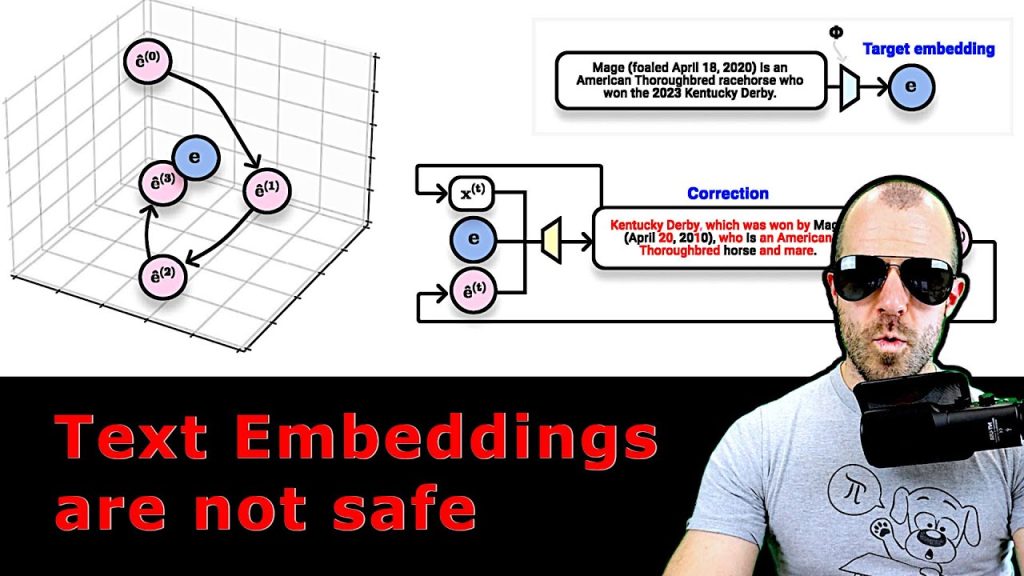This paper outlines how, under certain circumstances, text embeddings can be used to reconstruct the original embedded text.
OUTLINE:
0:00 – Intro
6:50 – Vec2Text: Iterative Embedding Inversion
12:20 – How to train this?
21:20 – Experimental results
26:10 – How can we prevent this?
31:20 – Some thoughts on sequence lengths
Paper:
Abstract:
How much private information do text embeddings reveal about the original text? We investigate the problem of embedding textit{inversion}, reconstructing the full text represented in dense text embeddings. We frame the problem as controlled generation: generating text that, when reembedded, is close to a fixed point in latent space. We find that although a naïve model conditioned on the embedding performs poorly, a multi-step method that iteratively corrects and re-embeds text is able to recover 92% of 32-token text inputs exactly. We train our model to decode text embeddings from two state-of-the-art embedding models, and also show that our model can recover important personal information (full names) from a dataset of clinical notes. Our code is available on Github
Authors: John X. Morris, Volodymyr Kuleshov, Vitaly Shmatikov, Alexander M. Rush
Links:
Homepage:
Merch:
YouTube:
Twitter:
Discord:
LinkedIn:
If you want to support me, the best thing to do is to share out the content 🙂
If you want to support me financially (completely optional and voluntary, but a lot of people have asked for this):
SubscribeStar:
Patreon:
Bitcoin (BTC): bc1q49lsw3q325tr58ygf8sudx2dqfguclvngvy2cq
Ethereum (ETH): 0x7ad3513E3B8f66799f507Aa7874b1B0eBC7F85e2
Litecoin (LTC): LQW2TRyKYetVC8WjFkhpPhtpbDM4Vw7r9m
Monero (XMR): 4ACL8AGrEo5hAir8A9CeVrW8pEauWvnp1WnSDZxW7tziCDLhZAGsgzhRQABDnFy8yuM9fWJDviJPHKRjV4FWt19CJZN9D4n
source

